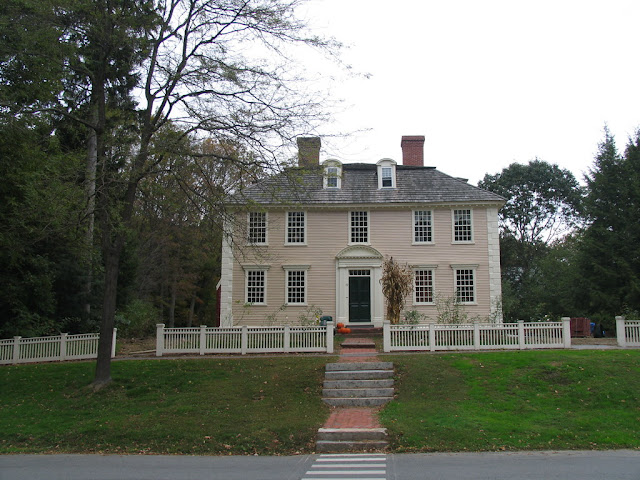Deerfield is one of the oldest Massachusetts settlements within the Connecticut River Valley. Settled in 1673, Deerfield was one of the furthest outposts of the early Colonial period. Deerfield and its surrounding areas were heavy in agriculture in the fertile fields of what is now known as the Pioneer Valley.
 |
| Old Main Street - Deerfield Village |
Within modern day Deerfield is the Historic Old Deerfield Village. A New England version of Colonial Williamsburg, Deerfield Village is a walk through to 18th Century New England. Much of the old village sits along a one mile stretch of Old Main Street. Here numerous historic homes and farmhouses from the 18th centuries can be found.
With a basic admission of $18 per adult, you are able to walk inside and tour the grounds and many of the homes within Historic Deerfield. Some homes have guided tours while others are self guided. At various places with in town, you can see woodworking or cooking demonstrations or take a stop at the Carriage Barn. When I visited in 2006, a wonderful 91 year old man, who did not look a day of it, tells stories about carriages and farm equipment from the 17th to the early 20th century.
 |
| One of the many 18th century homes within Historic Deerfield. |
Most of the guided tours are on the hour by members of Historic Deerfield. Parking is easy and for the most part, it is on either side of the quaint town road. There is also a gift shop and bookstore. The Visitor's Center is located within Hall Tavern. The tavern was built in 1760 in Charlemont and moved to Deerfield. The Tavern will sometimes host cooking demonstrations and also is home to a cook's garden.
 |
| An old fire call box and weathered American flag on the exterior of the Deerfield Fire Station. |
Visitors that want to fully immerse themselves within the town can stay overnight at the historic Deerfield Inn which has been operating since 1884. Or if passing through, enjoy lunch at Champney's Restaurant & Tavern.
 |
| The Deerfield Inn offers lodging and meals at Champney's Restaurant and Tavern. |
Old Deerfield is a National Historic District and also listed in the National Register of Historic Places. The preservation of the village under Historic Deerfield began in 1952 as a continuation of the work of Mr. and Mrs. Henry Flynt.
 |
| Deerfield Academy |
Deerfield today is a town of just over 5,000 residents. It is home to the Yankee Candle Flagship store in South Deerfield which attracts thousands. Deerfield Academy, a private preparatory high school, is located within Historic Deerfield. The highly prestigious school has been in operation since 1797.
All photos taken by post author - September 30, 2006.
Further Reading:
How To Get There:



Comments